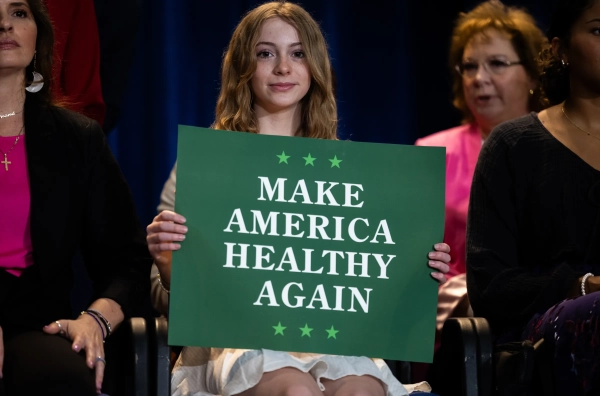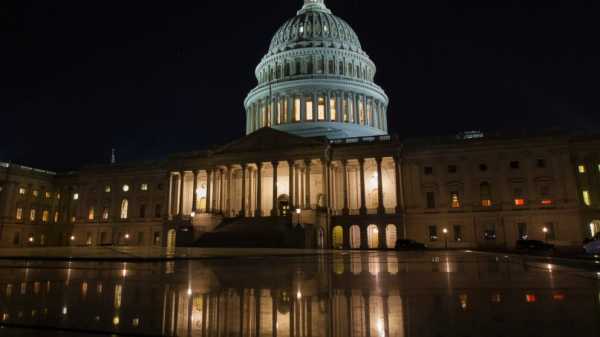
From Jessica Knurick’s perspective, the Make America Healthy Again campaign gained traction among Americans through social platforms — making these digital spaces crucial for public health advocates aiming to regain public trust.
Knurick, a PhD-trained nutrition expert, has emerged as a prominent figure within a budding opposition to MAHA. With over a million Instagram followers and hundreds of thousands on TikTok, she crafts concise clips blending media excerpts and data visualizations to challenge assertions by US Health Secretary Robert F. Kennedy Jr. and allies. Her delivery balances approachability with expertise, aiming to make scientific principles digestible amid an often chaotic online wellness landscape.
Before becoming a content creator, Knurick observed unsettling shifts in digital discourse. During her first pregnancy in 2019, she encountered concerning but manageable misinformation targeting expectant parents. The pandemic’s onset intensified polarization around health policies, and by her second pregnancy in 2022, alarmist narratives dominated her feeds.
“Many who previously trusted scientific consensus or institutional guidance found themselves isolated and inundated with decontextualized health claims and conspiracy theories during lockdowns,” Knurick explained. “This digital environment fertilized the growth of today’s anti-science sentiment.”
Related
- Is MAHA failing in its mission to improve national health outcomes?
- The deceptive allure of RFK Jr.’s Make America Healthy Again platform
- What’s driving declining health among American youth?
This transformation developed gradually. Platform algorithms increasingly prioritize alarming content, enabling wellness brands targeting mothers and young women to flourish through fear-driven marketing.
Kennedy’s 2024 presidential bid crystallized these anxieties about industrial toxins, food systems, and medical corruption into the MAHA identity. Now overseeing HHS under Trump, he’s reshaping federal health policies to align with MAHA principles.
Knurick and colleagues warn some MAHA policies might exacerbate health crises, citing this year’s unprecedented measles resurgence linked to declining vaccination rates.
The central challenge: How to persuade audiences when institutional credibility has eroded?
This dilemma defines Knurick’s mission.
While grounded in peer-reviewed research, her content emphasizes MAHA-style communication tactics to argue that the movement misidentifies causes and solutions for chronic disease epidemics. Though not universally persuasive, her follower count surged from 150,000 to over a million in two years, with self-reported converts among former skeptics.
Below is an edited transcript of our discussion about countering MAHA through its own methods.
Which MAHA-aligned concerns strike you as most legitimate?
New viewers sometimes conflate my messaging with MAHA’s because we acknowledge similar issues. Their diagnosis often contains kernels of truth, though sometimes exaggerated. While Kennedy falsely claims nearly half of US children have Type 2 diabetes (actual prevalence: under 1%), chronic diseases do affect most American adults, with many managing multiple conditions.
MAHA effectively channels a shared sentiment about profit-driven systems failing public health. Our food and healthcare infrastructures do prioritize corporate gains over population wellbeing, resulting in exorbitant costs and subpar outcomes compared to global peers.
Which MAHA claims lack credibility?
As someone specializing in chronic disease prevention, I’ve witnessed how MAHA distorts the narrative. While correctly identifying systemic failures, they erroneously blame regulatory corruption and “over-medicalization” rather than evidence-based social determinants like economic inequality or healthcare access.
Their fixation on seed oils and food dyes misplaces priorities. While some dye concerns warrant consideration, these rank low among dietary risk factors. Similarly, attacking outdated nutritional guidelines (discontinued in 2005) as corrupt ignores research showing guideline adherence improves diet quality.
“Wellness industry conflicts escape the scrutiny we apply to pharma and food sectors.”
Who comprises MAHA’s core constituency?
Kennedy’s base includes longstanding anti-vaccine advocates, but MAHA’s broader coalition often involves middle-to-upper-class white mothers. These women, wanting better health outcomes, may lack exposure to systemic health determinants affecting disadvantaged groups. New parents’ vulnerability to fear-based messaging (“Are you poisoning your kids?”) makes them prime targets.
Who’s your target audience?
Initially, I aimed to reach those encountering MAHA narratives without counterperspectives—people concerned about food systems but algorithmically trapped in MAHA echo chambers. Ideally, we can redirect well-intentioned supporters toward evidence-based systemic solutions.
How do you critique MAHA leaders without alienating followers?
I focus on policy impacts rather than personal attacks. While some dismiss my critiques outright, others engage after seeing substantiated arguments. You can’t reach everyone, but measurable progress occurs.
What key concepts help audiences evaluate health claims?
Media literacy fundamentals matter most. Recognizing correlation-causation fallacies helps debunk misleading graphs. Teaching viewers to spot oversimplified claims empowers them against misinformation.
Why highlight MAHA leaders’ financial ties?
While rightly questioning pharmaceutical/food industry motives, many ignore MAHA-affiliated entrepreneurs profiting from supplements (Calley Means’ TrueMed) or glucose monitors (Casey Means’ company). HHS’s new supplement research priorities align suspiciously with these ventures. The underregulated wellness sector deserves equal scrutiny.
Related
- Trump’s surgeon general nominee sparks MAHA ideological clashes
This disconnect allows wellness industry conflicts to flourish unchecked.
Source: vox.com






